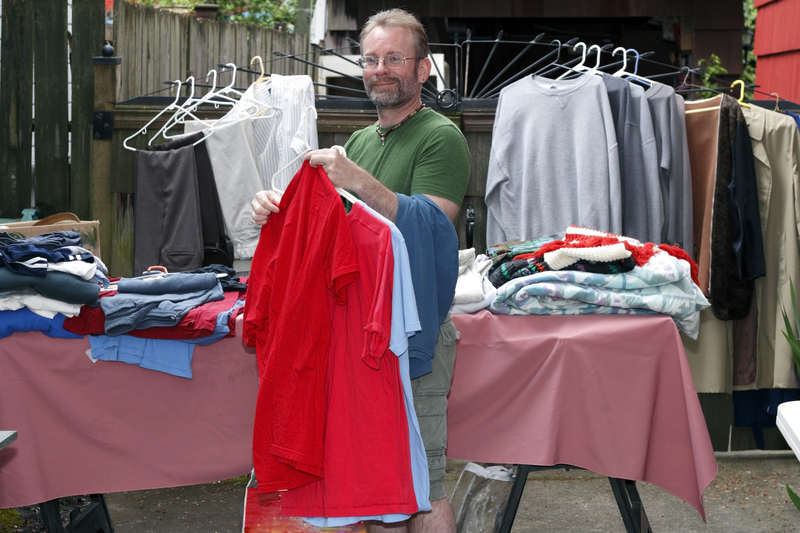A Guide to Recycling and Repurposing Old Pots and Pans at Home
Are you wondering what to do with old pots and pans that are taking up space in your kitchen cupboards? Instead of tossing them in the trash, you can choose eco-friendly ways to give them a new lease on life. In this comprehensive guide, we'll explore smart strategies for recycling cookware and offer creative ideas for repurposing old pots and pans around your home. Discover how you can help the environment while gaining functional and unique decor with these handy tips!
Why Should You Recycle or Repurpose Old Cookware?
Every year, millions of tons of kitchenware, including pots and pans, end up in landfills--contributing to environmental pollution. Most cookware is made from metals like aluminum, stainless steel, or cast iron, all of which are highly recyclable. Nonstick coatings and plastic handles present additional challenges, but responsible disposal and reuse can make a real difference to sustainability.
- Conserve natural resources: Recycling metal conserves valuable raw materials and energy.
- Reduce landfill waste: Repurposing or recycling old kitchenware prevents unnecessary landfill build-up.
- Unleash creativity: Old cookware can be transformed into planters, wall decor, organizers, and more.
- Save money: Repurposing items you already own saves you from buying new household goods.

How to Recycle Old Pots and Pans
If your cookware is dented, rusted, or damaged beyond reuse, the best option for disposal is recycling. Here's how to recycle your old pots and pans safely and responsibly:
1. Identify the Cookware Material
The first step is to check what your pot or pan is made of. The majority are manufactured with metals such as:
- Aluminum
- Stainless steel
- Cast iron
- Copper
Some pans have a nonstick coating (like Teflon), enamel, or silicone handles. These may need to be removed before recycling when possible.
2. Remove Non-Metal Parts
Take off plastic handles, glass lids, or silicone covers from your pans if feasible. Most recycling centers prefer clean, single-material metals for easier processing. If handles are riveted and can't be removed, don't worry--many scrap yards will still accept them.
3. Locate Your Nearest Scrap Metal Recycling Center
Most municipal curbside recycling does not accept old cookware due to their size and composite materials. Instead:
- Search online for local scrap metal dealers or recycling centers.
- Contact your municipal recycling program to ask for guidance.
- Check if hardware stores or kitchenware brands offer recycling take-back schemes (e.g., Williams Sonoma or Sur La Table occasionally run programs).
4. Drop-Off and Documentation
Take your cleaned and sorted pots and pans to a recycling facility. Some centers may even pay you for scrap metals, especially copper and aluminum. Make sure to ask about any documentation or proof of recycling if needed for city regulations.
Creative Ways to Repurpose Old Pots and Pans
Repurposing old cookware at home is not only environmentally friendly, but it can also yield stylish and functional new items for your kitchen, garden, and around the house.
1. Planters and Outdoor Decor
- Create quirky garden planters: Drill small drainage holes in the bottom of old pots or pans. Fill with soil and use them for flowers, herbs, or succulents.
- Hang saucepans as wall planters: Attach handles to hooks and create a vertical wall garden.
- Bird baths and feeders: Use shallow pans on pedestals or hung from trees to attract birds.
2. Kitchen and Home Organizers
- Utensil holders: A clean, deep saucepan makes an ideal spot for storing cooking tools or serving spoons on your countertop.
- Drawer dividers: Small baking tins or cups can corral loose items like tea bags, seasoning packets, or office supplies.
- Pot-lid message boards: Paint old pot lids with chalkboard paint for fun kitchen message boards or menu signs.
3. Wall Art and Clocks
- Turn pans into wall clocks: Fit a clock mechanism through the center of an old frying pan for a playful wall timepiece.
- Decorative wall hangings: Group vintage pans or lids with interesting designs into a kitchen-themed gallery wall.
4. Candle Holders and Centerpieces
- Candles and tealight holders: Fill small pans with wax and a wick for homemade candles, or set tealights for a cozy centerpiece.
- Seasonal displays: Decorate old pots with pine cones, ornaments, or autumn leaves for festive table centerpieces.
5. Outdoor Fire Pits and Camping Gear
- Small fire pit: Large old cast-iron pans are perfect for small, contained fires in the backyard or at a campsite.
- Camping cookware: Save less-than-perfect pots for camping trips or outdoor cooking where heavy wear is expected.
Frequently Asked Questions
Can I recycle nonstick pans?
Many recycling centers accept nonstick pans if the nonstick coating is completely worn or removed. However, the coating must usually be stripped for effective recycling. Some brands, like Tefal, offer mail-back recycling programs for their products--check with your cookware manufacturer.
Are old pots and pans safe to use for gardening?
Most metal cookware is safe for plants, especially if you are growing flowers or ornamental plants. For herbs and vegetables, avoid using pans coated with nonstick or enamel finishes if you are unsure of potential chemical leaching. Cast iron and stainless steel are considered safe and durable for garden use.
How do I clean pots and pans before recycling or repurposing?
Scrub off all food residue and oil. For recycling, pristine cleanliness is not necessary, but repurposed items (for decor or planting) should be as clean as possible to prevent odors or mold. Use hot water, soap, and a little baking soda for stubborn grease.
Can I donate old pots and pans?
Yes! If your old cookware is still usable, donate to local charities, shelters, college students, or thrift shops. Many organizations welcome kitchen items.

Tips for Repurposing Old Cookware Safely
- Avoid sharp edges: If you're cutting metal, sand down edges and wear protective gloves.
- Use food-safe paints or liners for planters or organizers that will come in contact with edible items.
- Stabilize heavy items to prevent them from tipping over, especially if repurposed as planters or birdbaths.
- Seal old nonstick surfaces if using for crafts to prevent flaking.
Conclusion: Give Your Old Pots and Pans a Second Life
Recycling or repurposing your old pots and pans is a practical and eco-friendly way to declutter your kitchen while supporting sustainability. Whether you transform them into garden planters, home organizers, or stylish decor pieces, old cookware can become both functional and beautiful again. For those items beyond repair, responsible recycling ensures valuable materials are recovered and reused, reducing waste and environmental impact.
Start your kitchen clean-out today and discover the satisfaction of turning clutter into creativity. Your home--and the planet--will thank you for it!
